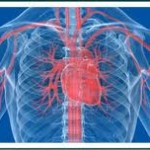
Treatment usually involves medications. Anticoagulants prevent new clots from forming. They include heparin, which is usually delivered with a needle and works quickly; or warfarin, which comes in pill form and takes a few days to begin working.
Certain medications, called thrombolytics, dissolve clots quickly. But they can cause sudden and severe bleeding, and are usually reserved for life-threatening situations.
Some surgical procedures are available.
For example, a catheter can also be used to place a filter in the main vein — called the inferior vena cava — that leads from the legs to the right side of your heart. This filter catches and stops blood clots moving through the blood stream toward your lungs.
This option is typically reserved for people who can’t take anticoagulant drugs or when anticoagulant drugs don’t work well enough, and can carry risks of its own. If shards from the filter break off, they can be deadly.
A study conducted by the New England Society for Vascular Surgery noted a 31 percent fracture rate in IVC filters. Most of the splinters found their way to patients’ right ventricles of the heart.
Bard Peripheral Vascular, manufacturer of Recovery IVC Filters, allegedly knew of these risks, but concealed them from patients and the U.S. Food and Drug Administration.
Doctors may also try to remove clots by suctioning them out with a thin flexible tube, or even with emergency surgery if the patient is in shock and thrombolytic medication isn’t working quickly enough.
If you’ve received an IVC filter, you should consult with a doctor if you have any ongoing symptoms or health concerns. If you have significant injuries, you should also consult with a IVC filter lawyer familiar with the case to discuss your legal rights.
See more information here:
https://www.mayoclinic.com/health/pulmonary-embolism/ds00429/dsection=treatments-and-drugs
